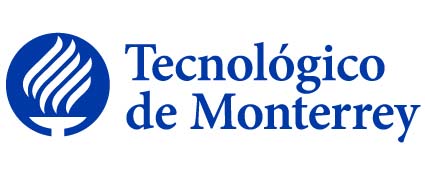
|
Curso en el que se recomienda incorporar la reflexión sobre dilemas éticos. |
|||||
|
|||||
Disciplina asociada:Tecnologías Computacionales |
|||||
Escuela:
Ingeniería y Ciencias
|
|||||
Departamento Académico:
Computación
|
|||||
Programas académicos: |
|||||
Requisitos:(Haber Aprobado TC2018) |
|||||
Equivalencia:TC2002 |
|||||
Intención del curso en el contexto general del plan de estudios: |
|||||
|
Curso de nivel Intermedio de Tecnología de Información que proporciona al alumno las bases sobre los protocolos de comunicación y estándares, particularmente en las capas 3 y 4 del modelo OSI, para el diseño e implementación de redes corporativas básicas que incluyan controles de acceso y mecanismos básicos de seguridad, así como para el diagnóstico y resolución de problemas de comunicación. Requiere conocimientos previos de fundamentos de redes y de organización computacional. Como resultado de aprendizaje el alumno será capaz de diseñar y operar una red corporativa básica, diagnosticar y solucionar fallas en ruteadores, desarrollar aplicaciones cliente servidor y controlar el acceso a los servicios de una red local. |
|||||
Objetivo general de la Unidad de Formación: |
|||||
| Al finalizar este curso el alumno debe alcanzar un nivel de conocimiento suficiente para analizar y comprender los diferentes protocolos, métodos y estándares de las capas de Red, Transporte, Sesión y Presentación del modelo OSI y el modelo TCP/IP, así como sobre los fundamentos de seguridad en redes. De igual forma desarrollará la habilidad para configurar y administrar los principales equipos que la integran (hubs, switches, ruteadores y servidores) así como para la resolución de problemas en la red. | |||||
Técnica didáctica sugerida: |
|||||
| No especificado | |||||
Bibliografía sugerida: |
|||||
|
LIBROS DE TEXTO: * Stallings, William., Data and computer communications , 7th ed., Upper Saddle River, N.J. : Pearson Prentice Hall, c2004, , 0131006819 * Bates, Regis J., Voice and data communications handbook , Signature ed., New York : McGraw-Hill, 2000, , 0070063966 * Forouzan, Behrouz A., TCP/IP Protocol Suite, 2nd ed., Boston ; México : McGraw-Hill, , 0071199624 (ISE : papel alcalino), 0072460601 (papel alcalino), 9780071199629 (ISE : papel alcalino) LIBROS DE CONSULTA: * Gallo, Michael A., Networking explained, 2nd ed., mau : Boston : Digital Press, 2002, eng, 1555582524 * Comer, Douglas E., Interconectividad de redes con TCP/IP , 3a. ed., México : Prentice Hall, c2003, , 9702600006 |
|||||
Perfil del Profesor: |
|||||
|
(110101)Maestría en Ciencias Computacionales/de Información ; (111002)Maestría en Administración de las Telecomunicaciones ; (110701)Maestría en Ciencias Computacionales ; (141001)Maestría en Ingeniería Eléctrica/Electrónica y Comunicaciones ; (110102)Maestría en Inteligencia Artificial /Robótica ; (110103)Maestría en Tecnología de la Información/Informática/Sistemas Computacionales ; (110101)Doctorado en Ciencias Computacionales/de Información ; (111002)Doctorado en Administración de las Telecomunicaciones ; (110701)Doctorado en Ciencias Computacionales ; (141001)Doctorado en Ingeniería Eléctrica/Electrónica y Comunicaciones ; (110102)Doctorado en Inteligencia Artificial /Robótica ; (110103)Doctorado en Tecnología de la Información/Informática/Sistemas Computacionales CIP: 110101, 111002, 110701, 141001, 110102, 110103 |
|||||
|
Course in which it’s recommended to incorporate the reflection on ethical dilemmas. |
|||||
|
|||||
Discipline:Computer Technologies |
|||||
School:
Engineering and Sciences
|
|||||
Academic Department:
Computing
|
|||||
Programs: |
|||||
Prerequisites:( TC2018) |
|||||
Equivalences:TC2002 |
|||||
Course intention within the general study plan context: |
|||||
|
The purpose of this intermediate computing course is to provide students with the basics regarding communication protocols and standards, particularly in levels 3 and 4 of the OSI model, for the design and implementation of basic corporate networks which include access controls and basic security mechanisms. In addition, students diagnose and resolve communication problems. It requires previous knowledge of network fundamentals and computing organization. The learning outcome of this course is for students to be able to design and operate a basic corporate network, diagnose and resolve router failures, develop client-server applications and control access to services on a local network. |
|||||
Course objective: |
|||||
| Upon completion of this course, students will have acquired sufficient knowledge to analyze and understand the different protocols, methods and standards of the network, transport, session and presentation layers of the OSI model and the TCP/IP model, as well as a basic knowledge of network security. They will have developed the skills to configure and manage the main equipment that forms part of networks (hubs, switches, routers and servers), and to solve network problems. | |||||
Teaching and learning tecniques: |
|||||
| Not Specified | |||||
Suggested Bibliography: |
|||||
|
TEXT BOOKS: * Stallings, William., Data and computer communications , 7th ed., Upper Saddle River, N.J. : Pearson Prentice Hall, c2004, , 0131006819 * Bates, Regis J., Voice and data communications handbook , Signature ed., New York : McGraw-Hill, 2000, , 0070063966 * Forouzan, Behrouz A., TCP/IP Protocol Suite, 2nd ed., Boston ; México : McGraw-Hill, , 0071199624 (ISE : papel alcalino), 0072460601 (papel alcalino), 9780071199629 (ISE : papel alcalino) BOOKS FOR CONSULTATION: * Gallo, Michael A., Networking explained, 2nd ed., mau : Boston : Digital Press, 2002, eng, 1555582524 * Comer, Douglas E., Interconectividad de redes con TCP/IP , 3a. ed., México : Prentice Hall, c2003, , 9702600006 |
|||||
Academic credentials required to teach the course: |
|||||
|
(110101)Master Degree in Computer/Information Sciences and (111002)Master Degree in Telecommunication Management and (110701)Master Degree in Computational Sciences and (141001)Master Degree in Electrical Engineering/ Electronics and Communications and (110102)Master Degree in Artificial Intelligence/Robotics and (110103)Master Degree in Information Technology. and (110101)Doctoral Degree in Computer/Information Sciences and (111002)Doctoral Degree in Telecommunication Management and (110701)Doctoral Degree in Computational Sciences and (141001)Doctoral Degree in Electrical Engineering/ Electronics and Communications and (110102)Doctoral Degree in Artificial Intelligence/Robotics and (110103)Doctoral Degree in Information Technology. CIP: 110101, 111002, 110701, 141001, 110102, 110103 |
|||||